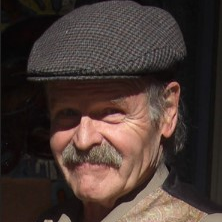Laser Interaction with Materials
A special issue of Photonics (ISSN 2304-6732). This special issue belongs to the section "Optical Interaction Science".
Deadline for manuscript submissions: closed (30 September 2021) | Viewed by 4528
Special Issue Editor
Interests: laser interaction with surfaces, modeling and measurements; design of high-energy laser systems for fusion and propulsion; optical diagnostics of plasmas, and general plasma physics; chemistry of the global environment; nonlinear optics of materials, theory and application; magneto-optics in semiconductors
Special Issue Information
Dear Colleagues,
In the U.S., we are entering a new decade with a new administration, offering a unique possibility for new programs that can apply lasers to world problems. We welcome proposals that are novel, creative, and reversible in case of unintended consequences in the following areas:
- Laser debris removal - close to a perfect solution for dangerous clouds of orbital debris, as well as for predicting and preventing future collisions
- Laser-driven particle acceleration
- Machining with ultrafast lasers
- Using laser-induced shocks for materials properties studies
- Novel uses for lasers in additive manufacturing (so-called 3D printing)
- Lasers in dentistry and orthopedics
- Lasers in space, laser cannons, laser launching to explore nearby space, ultrafast lasers for orbit metrics, laser nudging to prevent collisions, laser clearing of GEO parking spaces
- Laser defense applications
- Pulsed laser deposition, matrix-assisted pulsed laser evaporation, laser printing of biological systems
Dr. Claude R. Phipps
Guest Editor
Manuscript Submission Information
Manuscripts should be submitted online at www.mdpi.com by registering and logging in to this website. Once you are registered, click here to go to the submission form. Manuscripts can be submitted until the deadline. All submissions that pass pre-check are peer-reviewed. Accepted papers will be published continuously in the journal (as soon as accepted) and will be listed together on the special issue website. Research articles, review articles as well as short communications are invited. For planned papers, a title and short abstract (about 100 words) can be sent to the Editorial Office for announcement on this website.
Submitted manuscripts should not have been published previously, nor be under consideration for publication elsewhere (except conference proceedings papers). All manuscripts are thoroughly refereed through a single-blind peer-review process. A guide for authors and other relevant information for submission of manuscripts is available on the Instructions for Authors page. Photonics is an international peer-reviewed open access monthly journal published by MDPI.
Please visit the Instructions for Authors page before submitting a manuscript. The Article Processing Charge (APC) for publication in this open access journal is 2400 CHF (Swiss Francs). Submitted papers should be well formatted and use good English. Authors may use MDPI's English editing service prior to publication or during author revisions.





